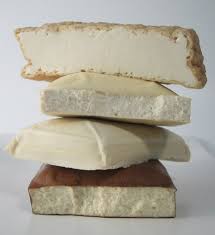I wanted to write this post about diet drinks because there has been so much information in the news lately about them. I am a former Diet Dr. Pepper fan, I've been off of it for a couple of months and don't even crave it anymore. Do you notice that once you drink diet drinks you start to crave them? That's because artificial sweeteners trick your brain into thinking you are eating something sweet, and the cravings begin. Even though the artificial sweeteners don't have calories, they are still affecting the brain the way sugar does.
REASONS WHY YOU SHOULD NEVER DRINK DIET DRINKS (or give them to your children)
All diet sodas, Crystal Light, "light" yogurt, reduced sugar or sugar free products, Roaring Waters Capri Sun, and more.
1. They increase the risk of diabetes
- a study published in the journal "Diabetes Care" in Jan. of 2009 found that people who drink diet soda daily have a 36% greater risk of metabolic syndrome (a group of risk factors that raise the risk of diabetes, stroke, and heart attack).
- the same study found that daily diet soda drinkers had a 67% increased risk of diabetes!!! 67%!
2. There is a link between diet drinks and depression. In one study individuals who drank diet soda had a 30% greater chance of depression over the period of 10 years. It can also lead to preterm delivery.
3. The caramel coloring in sodas is linked with hypertension (high blood pressure). It isn't the caffeine in sodas that raises blood pressure, it's the additive that gives it that nice brown color. Check food labels because caramel coloring is added to a lot of other processed foods. (I even found it in granola bars)
4. ARTIFICIAL SWEETENERS - this is by far the greatest reason why you should not drink diet drinks or give them to your children, or your elderly parents! Most sodas contain aspartame. Some of the newer sodas contain aspartame and sucralose (Splenda). Splenda is also an artificial sweetener that is chemically created and is linked to its own list of dangerous side effects. But why is aspartame so bad? It's found in a lot of reduced sugar foods and drinks, so it must be safe, right?
- Aspartame is considered an excitotoxin (it's a new word for me too). Excitotoxins can get into the brain and literally excite the neurons to death, which leads to cell damage, which leads to brain damage, which can lead to other problems like dementia or Alzheimers. If you are pregnant, excitotoxins also cross the placental barrier, causing problems in unborn children.
- One other example of an excitotoxin is glutamate (found in MSG). Both glutamate and aspartame are supposed to stay away from the brain and only be in our blood streams. However, the blood-brain barrier that keeps these kinds of molecules out is not always functioning 100%. Children's blood-brain barriers are still developing, so there are "holes" or places where things can sneak through, and lead to over stimulation (ie: temper tantrums and bad behavior). It's important to know though that there might not be any outward symptoms to alert you to the damage, you may not find out for years that parts of your brain are affected.
- Older people also need to be concerned because as we age, the blood-brain barrier breaks down, especially if you have had a stroke, blunt head trauma, or brain injury. Some studies have suggested a link between excitotoxins like aspartame and glutamate (MSG) and Alzheimer's. In a person who is already genetically predisposed to Alzheimers, these chemicals simply speed up the process and possibly increase the damage.
- it can be easy to avoid giving aspartame to our children or ourselves, but avoiding MSG is much trickier. My first blog post lists some of the sneaky names that it hides behind (yeast extract, hydrolyzed protein, natural flavors, and about 37 more). In general, most processed foods in boxes and bags on the grocery store shelves contain MSG. If you consume MSG with your breakfast, by the time it's out of your system it's time for lunch. And then dinner. You can easily keep a steady stream of glutamate in your body or in your child's body.
How do I eliminate MSG from my diet?
- stop eating processed foods
- eat more fresh or frozen fruits and vegetables
- make your own broth for soup, taco seasoning, enchilada sauce, etc.
- cook your own rice and refried beans, most packaged rice foods contain msg for flavoring. I even saw quinoa at the store with msg in it, and most people think of quinoa as a health food.
- avoid deli meats and sausages
- eat plain potato chips, all of the flavored ones contain msg, especially Doritos.
It does take more time. And it means more cooking from scratch, with whole ingredients. But it's worth it.




